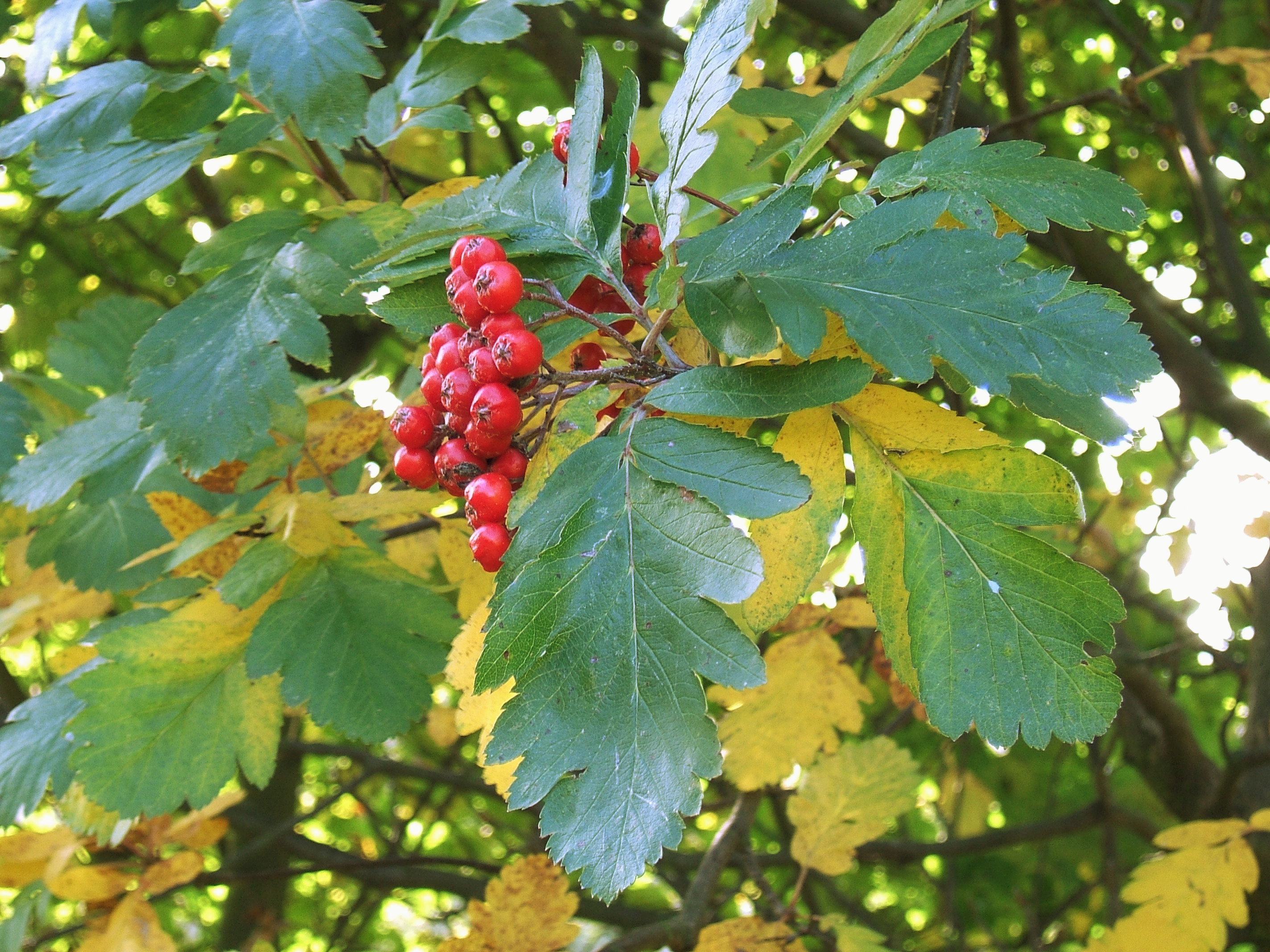- Sorbus hybrida
Taxobox
name = "Sorbus hybrida"

image_width = 240px
image_caption = Foliage and fruit
regnum =Plant ae
divisio = Magnoliophyta
classis =Magnoliopsida
ordo =Rosales
familia =Rosaceae
subfamilia =Maloideae
genus = "Sorbus "
subgenus = "Aria"
species = "S. hybrida"
binomial = "Sorbus hybrida"
binomial_authority = L."Sorbus hybrida" (Finnish Whitebeam) is a species of
whitebeam native toScandinavia inNorway , easternSweden , and southwesternFinland , and locally in theBaltic States inLatvia .Rushforth, K. (1999). "Trees of Britain and Europe". Collins ISBN 0-00-220013-9.] Den Virtuella Floran: [http://linnaeus.nrm.se/flora/di/rosa/sorbu/sorbhyb.html "Sorbus hybrida" (in Swedish; with maps)] ] Vedel, H., & Lange, J. (1960). "Trees and Bushes in Wood and Hedgerow". Metheun & Co. Ltd., London.]It is a medium-sized
deciduous tree growing to 10–15 m tall with a stout trunk up to 60 cm diameter and greybark ; the crown is columnar or conic in young trees, becoming rounded with age, with branches angled upwards. The leaves are green above, and densely hairy with white hairs beneath, 7–12 cm long and 5–8 cm broad, lobed, with six to nine oval lobes on each side of the leaf, broadest near the base with the two basal pairs of lobes cut right to the midrib as separate leaflets, rounded at the apex, and finely serrated margins. The autumn colour is dull rusty brown. Theflower s are 20 mm diameter, with five white petals and 20 yellowish-white stamens; they are produced incorymb s 6–11 cm diameter in late spring. Thefruit is a globosepome 12–15 mm diameter, bright red, maturing in mid autumn. The fruit is succulent, and eaten by thrushes and waxwings, which disperse theseed s.It is closely related to "
Sorbus intermedia " (Swedish Whitebeam), which differs in having the leaves less deeply lobed with no separate leaflets, and to "Sorbus meinichii ", which differs in having the basal four to six pairs of lobes cut right to the midrib as separate leaflets. All three are tetraploid apomictic species which breed true without pollination, and ultimately of hybrid origin between "Sorbus aria " and "Sorbus aucuparia ".Cultivation and uses
It is occasionally grown as an
ornamental tree in northern Europe, though much less frequently than "S. intermedia"; it is locally naturalised in the British Isles.References
Wikimedia Foundation. 2010.
